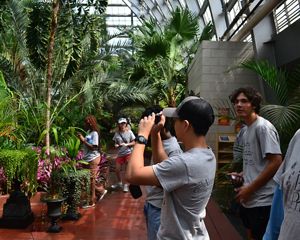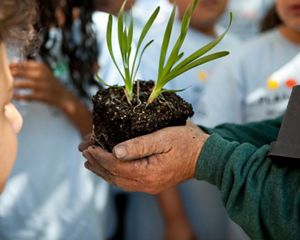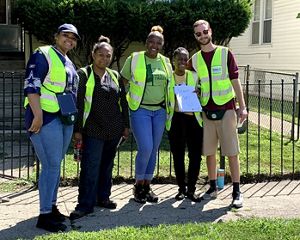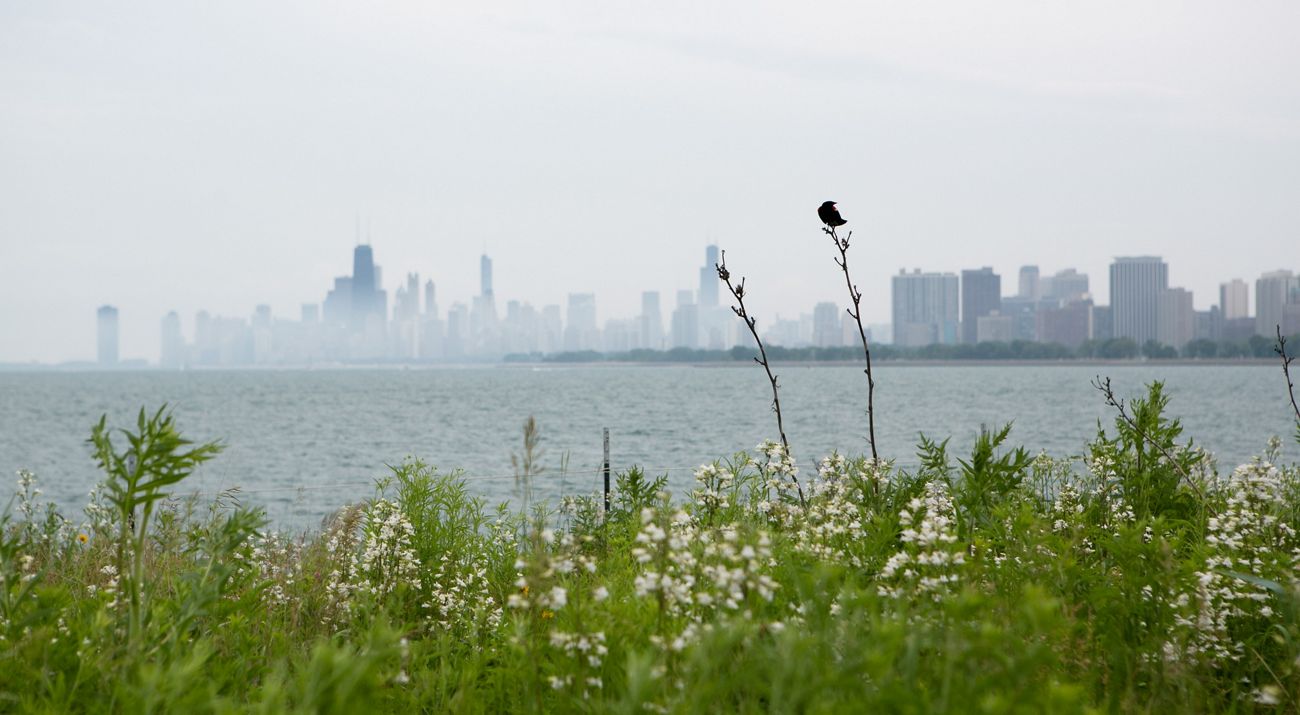
Across the country, cities place an incredible demand on our natural resources. In Chicago, for example, we rely on the Great Lakes to provide our drinking water, to transport ships and freighters carrying agricultural goods and other products, to support commercial and recreational fishing industries, and to serve as a water source for industrial processes. Our growing demands, paired with additional environmental stressors from a changing climate, will be unsustainable in the future. Yet even as we rely on nature for so much, many of those who live in urban areas aren't able to access or may not be aware of nearby parks, natural areas, or other green spaces, and thereby the mental and physical benefits that nature provides. This poses serious risks to human health and well-being.
With smart planning, science-based solutions and strong partnerships, we can bring nature back to our cities to ensure they are resilient, healthy and equitable today and for future generations.

The Urban Conservation Challenge
The combined impacts of increased demand on our natural resources and a changing climate will lead to more urban flooding, air pollution, urban heat islands and neighborhoods that are disconnected from nature. Here in Illinois, we are already seeing these impacts:
• By the end of this century, Chicago could be dealing with three times as many 90-plus-degree days.
• The American Lung Association counts Chicago's air quality among the worst in the country.
• Many Chicago neighborhoods are disconnected from the natural areas that we rely on for physical and mental health.
• An aging sewer system and inadequate infrascture means that many Chicago communities are impacted by stormwater runoff, resulting in more frequent flooding of the city’s homes, businesses and waterways.

We Can’t Protect Nature Without You
Sign up to receive monthly conservation news and updates from Illinois.
The Urban Conservation Solution
Can nature and people thrive together? We believe the answer is yes. Our science shows us there is a more sustainable path—powered by a virtuous cycle, in which people recognize the role nature plays in improving their lives and take better care of it. The Nature Conservancy is partnering with community groups, state and federal agencies, universities and other stakeholders to address the environmental challenges the Windy City faces. Here's a look at some of our work in Chicago:
- We're collaborating with partners here in Illinois and across the Illinois–Indiana border to restore natural areas in the Calumet region that were once considered lost causes, such as the Grand Calumet River.
- Volunteers across the city ensure that our natural areas are thriving. Now, we’re working with the Chicago Park District to expand volunteer opportunities in natural areas and increase protected land to 2,020 acres by 2020.
- Through a partnership with The Institute for Sustainability and Energy at Northwestern University and Argonne National Laboratory, we are learning how Chicago-area prairies hold rainwater and alleviate flooding for nearby residents, thereby making urban spaces across Chicago more livable.
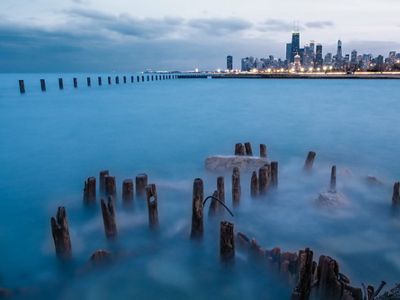
What's Happening in Chicago Right Now?
Chicago’s motto is "Urbs in horto," a Latin phrase meaning "City in a Garden.” If you’ve ever dipped your toes in Lake Michigan at one of the city’s beaches, or rested under a shady tree at a natural area, you know the city has worked hard to create and maintain its 750 parks. But in many places, you’ll still find more paved roads and parking lots than green space—and that can have serious impacts on both people and nature.
“Cities like Chicago need nature to be healthy,” says John Legge, TNC's Chicago conservation director. “Trees and other plants not only clean pollution from the air, but they keep it cooler during the hot summer months. Each year across the globe, more than 12,000 people die in heat waves, and another 3 million die as a result of air pollution. Children and the elderly are especially at risk.”
To help stakeholders better understand which Chicago communities need more green space, TNC is using an approach called urban greenprinting. This will allow decision makers to prioritize where to focus conservation efforts.
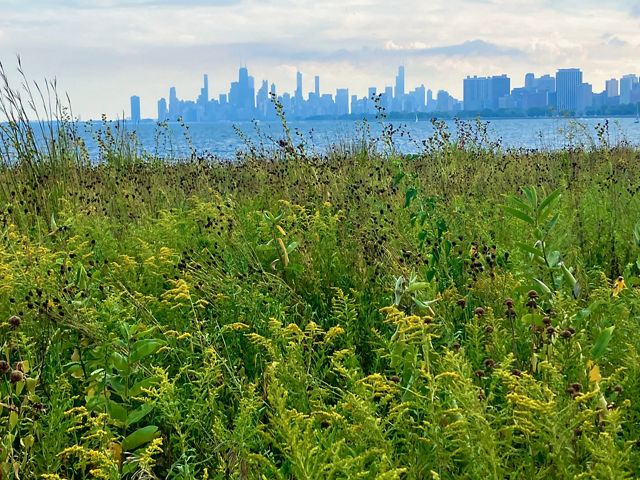
Urban Greenprinting
Greenprinting analyzes numerous layers of data to show which Chicago and suburban neighborhoods are most at risk for factors such as poor air quality or high temperatures, as well as which have the highest concentrations of children and older citizens. Check out TNC's 2020 and 2023 greenprint maps.
"In those places, we can plant trees and native plants and install rain gardens, bioswales and other types of natural infrastructure,” John explains. "The addition of nature into these communities will help mitigate the pollution and increasing urban heat that are affecting human health.”
Air quality and temperature are just two of myriad factors that a greenprint can analyze. The approach also shows which neighborhoods are the most vulnerable to one of the city’s ongoing environmental issues: flooding.
"In cities, heavily paved areas don’t leave much place for storm water to go except the sewer system,” John says. "During excessively heavy rains, which we are seeing more of as the climate changes, the sewer’s capacity often becomes overwhelmed. Because Chicago’s system collects rainwater, domestic sewage and industrial wastewater in the same pipes, an extreme storm event can contaminate our waterways through combined sewer overflows (CSOs). Such storms also often overwhelm the sewer system and cause urban flooding and basement backups far from our waterways."
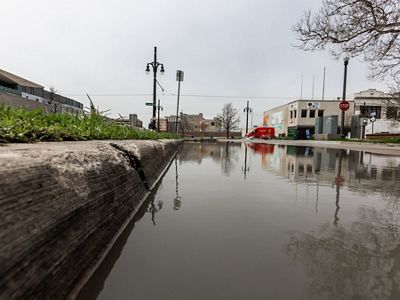
These discharges create water quality issues, not only for city residents who struggle with health risks and property damage, but also for the larger Great Lakes ecosystem, as discharges end up in the Chicago River and ultimately Lake Michigan. Adding nature to the right locations can make a big difference
“Imagine that natural infrastructure such as a bioswale, a rain garden or even a street tree are sponges that can soak up much of the excess water before it hits the sewer system,” John says. “Greenprint tells us what neighborhoods are at the greatest risk, so we can focus on getting more natural infrastructure there.”
Several partners supplied key data layers for this work, including the Chicago Metropolitan Agency for Planning and the Morton Arboretum. The map is already being utilized by multiple stakeholders in Chicago to help neighborhoods and citizens understand the risks they face and how natural infrastructure can play a key role in solving them.
"This approach offers a win-win for people and nature," John says. "It holds a lot of potential, and not just for Chicago. It’s being used by other TNC programs across the country for cities facing similar issues."
